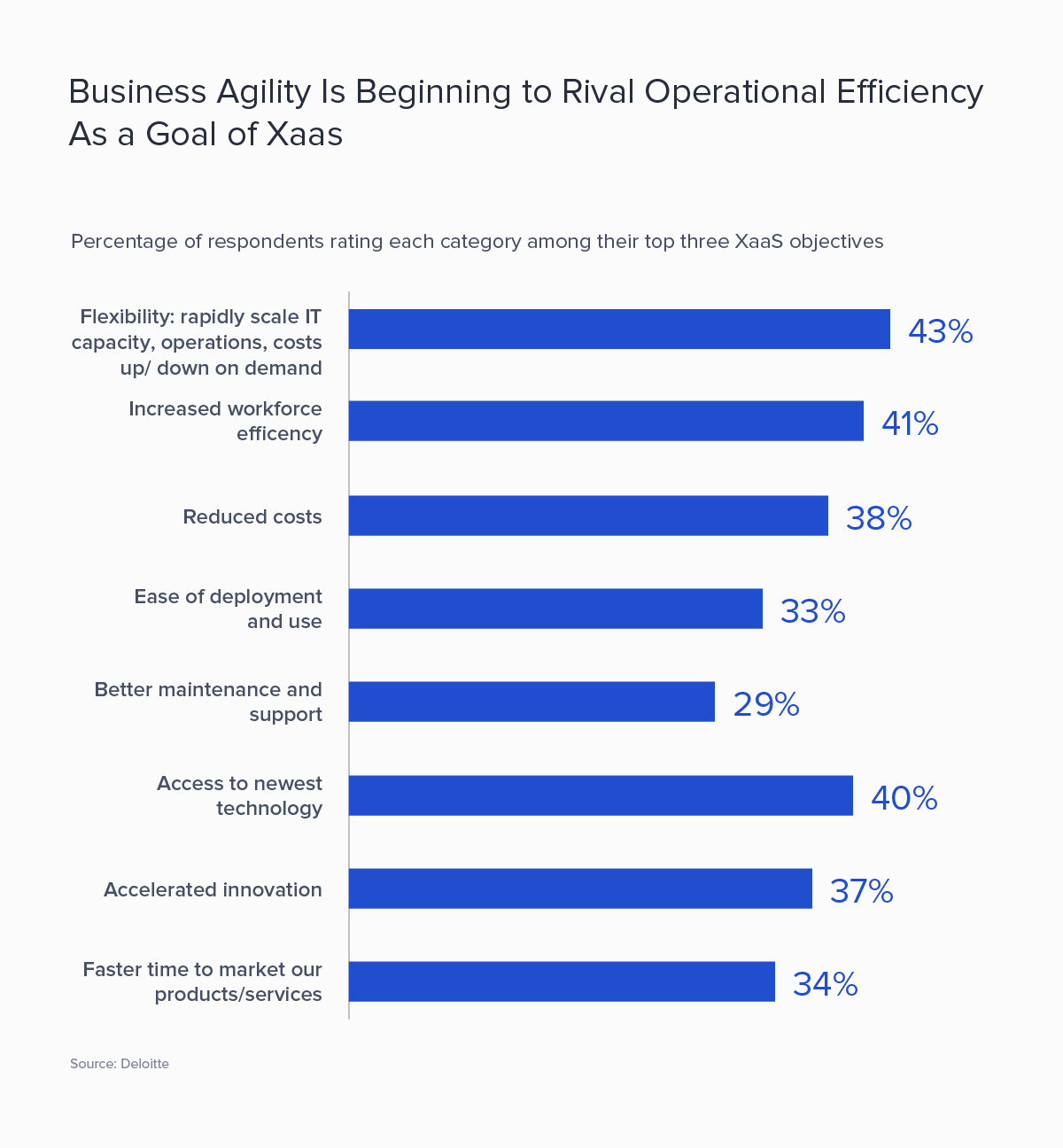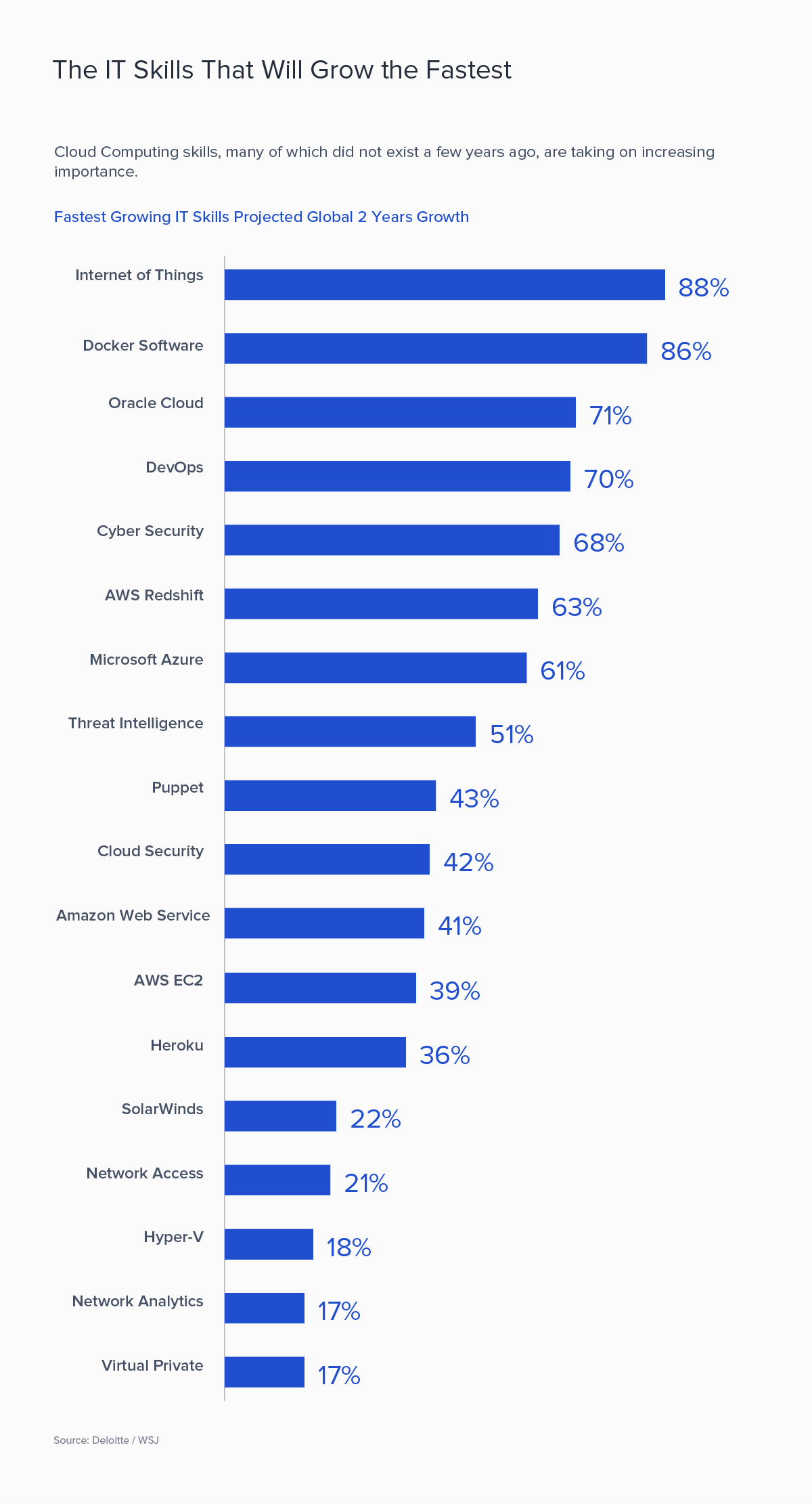3 Technologies That Will Accelerate On-demand Talent
authors are vetted experts in their fields and write on topics in which they are extremely knowledgeable. All of our content is peer reviewed and validated by world-class professionals.

What once took companies decades to create can now be done in days. Growth that once took years now takes days (just look at how fast Amazon made its latest billion—2.1 days). The pace of change and technological growth is increasing rapidly and bringing new challenges and opportunities.
As the pace of innovation increases, technologies emerge more quickly and with greater potential to disrupt the industries that leverage them. Says author Marina Gorbis: “The creations coming out of Silicon Valley in the form of apps, devices, and software platforms are not so much facilitating a ‘race against the machines,’ but a race against our own social institutions, values and practices, and that is the future."
Technology plays a role in all areas of work, but especially in the growing on-demand talent field. It is because of these evolving innovations that more employees are able to work remotely, either full-time or part-time.
On-demand talent models offer several distinct competitive and strategic advantages over traditional workplace models:
- Flexible talent pools allowing companies to sustain peaks and valleys.
- Hybridized working models: On-demand is a necessary addition to traditional captive employee models.
- Fast response to company demands by hiring required talent in days, rather than weeks or months.
- Trial runs for future permanent roles, allowing the company to experiment first.

The Future Is Skill-based
The recent boom of new technology begets many benefits, but it also raises challenges as many aspects of traditional organizations are disrupted. One of the main issues is the digital skills gap: There are simply not enough skilled workers to fill new digital positions. The World Economic Forum predicts that by 2022, 133 million new positions will be created as a result of the division of labor between humans, machines, and algorithms. In most cases, there aren’t enough skilled workers to fill these new positions, resulting in a large talent shortage, which is only compounded by the lack of re-skilling of the current workforce. A survey of senior executives found the talent shortage jumped from third to first place as the emerging risk to organizations worldwide in 2019.
The talent shortage comes from a lack of in-demand skills, including cloud computing, data analytics, people management, UX design, video production, and sales leadership. Research from McKinsey predicts that nearly one-third of workers in the US will need to find new jobs by 2030 as a result of rapid technology advancements. But in order to fulfill those new roles, employees need to be constantly learning new skills. Relying on past training and knowledge simply isn’t enough for employees to be prepared for the changing and disrupted work landscape. Many employees feel overwhelmed with the concept of adding to their technical skill sets and don’t have the time or company resources to update their training or simply don’t know where to start. Melinda Gates said, “To be successful, every single one of us has to learn new skills—not just once, but throughout our careers.”
The combination of a talent shortage and disruption by new technology is a huge problem for many companies. There aren’t enough skilled workers to fill much-needed positions, and the time and resources to find the needle in the haystack of a qualified candidate can be discouraging. However, the issue can be addressed quickly through on-demand talent solutions.
Using solely local candidate pools severely limits an organization’s ability to respond quickly to change. Many organizations are so caught up in their long-held hiring procedures that by the time they hire someone, the needed skills have evolved. The most successful companies are agile in hiring people in the moment through on-demand talent solutions. When they need someone with a certain type of expertise, they can hire them on a project basis much more quickly, which provides flexibility and room for growth. Disruption is occurring, but on-demand talent allows companies to adjust quickly and avoid being completely uprooted.

On-demand Unlocks Critical Technologies
The vast amount of data and technology being created, advertised, sold, developed, and leveraged is overwhelming. Organizations need a strategic approach to integrating these new technologies. On-demand talent solutions offer a flexible approach to exploring nascent tech without the hassle of building a full-time team.
AI
Artificial intelligence (AI) is one of the most talked-about elements driving the future of technology and work. But as nearly every sector clammers to understand and implement it—and its close cousin, machine learning—scarcity of talent ensues.

AI-driven strategies can lead to huge boosts. In one case study, a technology company leveraged AI to create best-fit algorithms to increase product segmentation and forecast reliability. It led to $330 million in savings and a 17% increase in planning accuracy.
It’s time for the technology leaders across the board in every industry to discuss how AI can be used to improve quality, speed, functionality, and even drive top line revenue growth.
– Deloitte
The same Deloitte research predicts an exponential increase in commercial AI-based applications in the next three to five years.
AI’s transformative potential gives it the highest possible ROI of perhaps any other new technology.
- Walmart uses SAP’s HANA cloud platform to process tens of thousands of transaction records in seconds to create usable data points.
- The Wall Street Journal uses AI to score readers based on reading history and past purchases. The score impacts paywall enforcement and increases conversion rates.
- Kaiser Permanente uses AI-powered algorithms to identify patients with the highest risk for key diseases, predicting who will respond to care interventions.
Gartner says AI “opens up a new frontier of digital businesses.” A natural way to harness that potential can be found in on-demand talent models. The pace of AI is unprecedented, and stagnating in a hiring holding-pattern isn’t commensurate with the speed of innovation. On-demand workers offer the freshest updates and perspectives. They also offer specialization, allowing companies to hire with critical specificity depending on how they are applying AI or machine learning.
Executives need to consider what happens without fusing AI into their best practices.
Entire industries stand to be disrupted by automation if they don’t proactively adopt and adapt. To stay competitive and relevant, companies need to harness the best possible talent. Opening up talent pools via a hybridized approach that includes retained talent and in-demand skill sets is advisable. By keeping multiple talent channels wide, organizations ensure rapid access to the world’s best, as needed.
XaaS (Anything as a Service)
SaaS—software as a service—is most often accredited to Salesforce CEO Marc Benioff. XaaS, or Anything as a Service, is used as an umbrella term for web-delivered services including SaaS, Platforms as a Service (PaaS), and Infrastructure as a Service (IaaS). Moving beyond traditional software and IT products, XaaS involves delivering products to customers horizontally instead of vertically. In this model, the customer benefits from the same creation the company has built for itself.
Major companies, including Amazon and Salesforce, operate via a XaaS model to create additional or primary revenue streams. Salesforce’s SaaS offerings provide customers with top customer relationship management systems, and Amazon uses AWS to sell its own PaaS software. According to a 2018 Deloitte survey, most organizations prefer to acquire all of their enterprise IT—aside from the obvious one, computer hardware—as a service. To play into the XaaS marketplace means to play to the preferred way enterprises want to acquire new IT. 71% of IT professionals say XaaS makes up more than half of their enterprise IT.

Thanks to additional capabilities offered through Internet of Things (IoT) technologies (see below), XaaS models are extending past software to manufacturing and consumer goods industries as well. Rolls-Royce created a successful service-based program called TotalCare for its jet engine customers, which “removes the burden of engine maintenance from the customer and transfers the management of associated risks to Rolls-Royce.” The program charges customers on a “power-by-the-hour” basis, using IoT sensors to deliver proactive maintenance alerts and streamline engine efficiency. The program extended service intervals between engine overhauls by approximately 25%, creating saved revenue and reduced performance disruption for major airlines.
Because XaaS offerings can be complex and can involve new, emergent technologies—like IoT sensors—it’s critical to kick off these initiatives through seasoned experts. Often, they come from outside the organization. Through expertise and granular specificity, on-demand experts can be the critical unlock for developing a game-changing XaaS offering.
Internet of Things
Everyone has experienced and interacted with the Internet of Things, even if they don’t realize it. The IoT means connecting all of the things across the world to the internet. It may sound simple but the practice and repercussions of the technology are often much more involved.
IoT includes autonomous things like robots, drones, and self-driving cars powered by AI, but also sensors and smart objects. The beauty of the IoT is that it has numerous use cases ranging from personal health to manufacturing. Microsoft and Uber use autonomous IoT robots to predict and prevent crime by tracking analytics for unusual activity. Municipalities are implementing IoT water meters and traffic cameras. In agriculture, robots are being developed to autonomously operate farms in a more efficient and sustainable manner than humans. The Dubai police force has plans to use autonomous vehicles that can deploy drones for surveillance as needed.
IoT use cases also extend to digital items that are connected to the internet. Virtual assistants and chatbots can be completely autonomous or programmed to only complete routine tasks, while independent agents can operate in the background without direct supervision and monitor system health and proactively update software. The growth of the IoT has also led to a massive increase in demand for IT cybersecurity professionals.
IoT programs interact not only with the internet and its human users but also with each other for powerful collaboration. Virtual assistants can work across digital workplace tools to coordinate a complex request that moves between multiple people. This is especially useful in the on-demand talent field as IoT devices coordinate data handoffs across employees around the world safely and seamlessly.

The future of IoT is integrated with humans for seamless movement between the physical and digital worlds. Through the use of “smart spaces,” people, processes, and technology are fused, creating interactive experiences. IoT-based technologies have the potential to completely reimagine and redesign how we interact with and incorporate technology into our world and workspaces.
Companies on the cutting edge will want to become frontrunners in responding to these shifts, and their strategy should include harnessing on-demand talent as needed to drive these initiatives. On-demand teams can test new IoT capabilities or provide insights into building a roadmap toward IoT deployment. Just like the devices themselves, the on-demand applications are nearly endless.
Like with other rapidly changing technologies, on-demand talent allows organizations to move quickly with new advances in the IoT. With numerous applications, companies can bring in experts for specific projects to ensure each aspect of their IoT initiatives is top of the line. Instead of a full-time employee with a basic understanding of the IoT, on-demand talent can bring in a variety of specialized experts. The IoT thrives with strong connections, and the technology itself can be reflected in strongly connected teams with on-demand workers from all backgrounds. The ability to quickly assemble a diverse team of experienced experts is a powerful tool in the IoT.

On-demand Talent Pushes Future Technology
New technology is developing at a rapid pace, and without leveraging on-demand talent, organizations simply won’t be able to keep up. The wide variety of applications in AI, XaaS, and the IoT opens countless doors of possibilities for organizations of all sizes and in all industries. Companies are able to completely redesign how they work, interact with clients, and affect the world.
To lead the way toward the future, forward-thinking brands need to leverage talent on demand to utilize the best skills and move quickly and with agility. The long-term implications of this shift will be powerful and long-lasting and will come to redefine the business models and working lifestyles of the future.
